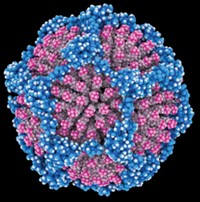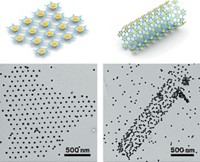Advertisement
Grab your lab coat. Let's get started
Welcome!
Welcome!
Create an account below to get 6 C&EN articles per month, receive newsletters and more - all free.
It seems this is your first time logging in online. Please enter the following information to continue.
As an ACS member you automatically get access to this site. All we need is few more details to create your reading experience.
Not you? Sign in with a different account.
Not you? Sign in with a different account.
ERROR 1
ERROR 1
ERROR 2
ERROR 2
ERROR 2
ERROR 2
ERROR 2
Password and Confirm password must match.
If you have an ACS member number, please enter it here so we can link this account to your membership. (optional)
ERROR 2
ACS values your privacy. By submitting your information, you are gaining access to C&EN and subscribing to our weekly newsletter. We use the information you provide to make your reading experience better, and we will never sell your data to third party members.
Materials
New Class Of Protein-DNA Nanostructures
Protein Design: Computational modeling used to design protein that co-assembles with DNA to form nanoparticles and nanowires
by Stu Borman
September 7, 2015
| A version of this story appeared in
Volume 93, Issue 35
Researchers have used computational design to create a protein that coassembles noncovalently with DNA to form a new class of nanomaterials. In previous protein-DNA hybrids, proteins were covalently attached to nanostructures preformed from DNA. In the new material, Yun (Kurt) Mou, Stephen L. Mayo, and coworkers at Caltech instead got a protein to coassemble with DNA from the get-go (Nature 2015, DOI: 10.1038/nature14874). They believe this design allows greater structural diversity and better control of self-assembly than earlier protein-DNAs. They computer-engineered a fruit fly protein, engrailed homeodomain, to form dimers that each bind two DNA fragments. The dimers self-assemble with DNA to form nanoparticles or single-molecule-width nanowires. Christof M. Niemeyer of Karlsruhe Institute of Technology, in Germany, comments that it remains to be seen if the hybrids will outperform nanomaterials composed of peptides, proteins, or nucleic acids alone but that the work “nicely demonstrates how today’s power of computational design can be harnessed to create entirely novel biomaterials.” Itamar Willner of the Hebrew University of Jerusalem adds that the new nanomaterials could have biomedical uses and “provide functional scaffolds for electronic and optoelectronic applications.”






Join the conversation
Contact the reporter
Submit a Letter to the Editor for publication
Engage with us on Twitter